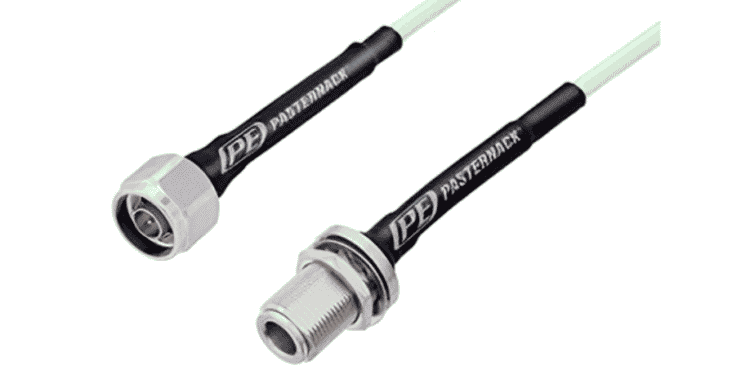Coaxial cables are arguably the most common RF/microwave physical interconnect technology.
Outside of waveguides and planar interconnect, coaxial cable assemblies are one of the few proven methods of reliably connecting RF/microwave/millimeter-wave networks. Given the diverse range of applications for coaxial cable assemblies, these cables are not one-size-fits-all. There are a variety of different coaxial cable and coaxial connector designs to meet virtually all application requirements. This blog focuses on three main types, low-PIM, low-loss, and phase-stable coaxial cable assemblies.
What Are Low-PIM Coaxial Cable Assemblies?
Low-PIM coaxial cable assemblies, or low-passive intermodulation distortion (PIM), cables are an assembly of low-PIM coaxial connectors and low-PIM coaxial cables. Low-PIM is an indicator that a connector and/or cable have passed PIM testing standards and when perturbed by PIM testing signals have resulted in a PIM reading that is below acceptable thresholds. As excessive PIM can interfere with the quality of communication signals and is directly caused by the passive components in the system, it is often desirable to have low-PIM components available when needed. Generally speaking, for communications systems that may suffer from a high PIM reading, one of the methods to reduce the PIM reading is to replace existing coaxial cable assemblies with low-PIM coaxial cable assemblies.
What is A Low-loss Coaxial Cable?
Low-loss coaxial cable assemblies are similar to low-PIM cable assemblies, but instead specifically designed and tested to ensure that the insertion loss through the coaxial cable is below a certain threshold. Insertion loss is the amount of electromagnetic (EM) energy lost when sending signals from one end of the coaxial cable assembly to the other. In some applications, such as with high-sensitivity receivers, it is desirable to have minimal loss from the antenna to the low-noise amplifier, as any added loss can negatively impact signal-to-noise ratio (SNR).
What Are Phase-stable Test Cables For?
Phase-stable test cables are coaxial cable assemblies specifically designed to provide a stable phase response during flexing or bending. This is crucial as during the calibration process of a VNA the phase of the calibration signals to calibration standards is a crucial component in ensuring a quality calibration. If during flexural or bending when connecting DUTs, the phase response of the coaxial cable changes, then the calibration can become invalid and the VNA measurements can have substantial error. Hence, for VNA test setups that require flexible cable, phase-stable cable, often just called VNA test cables, are essential components for precision measurements.






